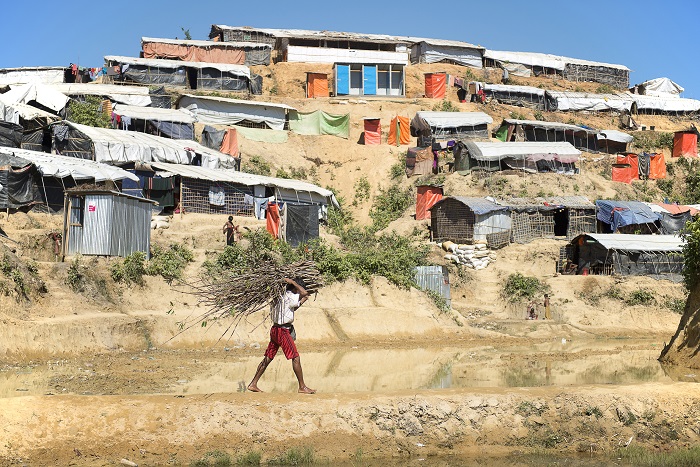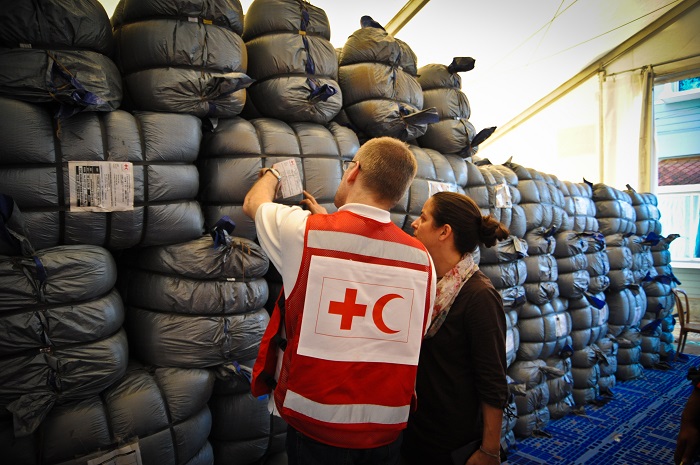Shifting to a greener response
Addressing environmental issues and reducing the climatic impact of disaster response have become concerns of increasing importance in the humanitarian aid sector. Whilst saving lives is and must remain the top priority of any emergency operation, the humanitarian sector also has a responsibility to minimise the adverse environmental impacts of its action.

neighbouring Rakhine State, Myanmar. © Victor Lacken / IFRC
In 2014, the International Federation of Red Cross and Red Crescent Societies (IFRC) established a Green Response Working Group in collaboration with National Red Cross and Red Crescent Societies to streamline greener practises in humanitarian operations. The “Green Response initiative” seeks to improve the environmental outcomes of our emergency response activities by extending the ‘do no harm’ principle to the environment and ecosystems – on which the people we seek to assist often rely. The working group has also worked to influence the global humanitarian agenda with regards to sustainability and environmental considerations.
At the European Commission’s Civil Protection and Humanitarian Aid Operations Directorate-General (DG ECHO) 2019 Annual Conference on 2-3 December, the Chair of the IFRC Green Response Working Group, Caroline Gårdestedt outlined the Red Cross Red Crescent’s climate-related ambitions. “It’s a shift in mindset. We need to improve what we are already doing but also think differently”, she said. Action against climate change is also at the heart of the priorities of the new European Commission, including DG ECHO. As highlighted during the conference, it’s not only about greening the response, but also about putting preparedness and resilience at the heart of what we do.
Earlier this year, the IFRC released its “Green Response Strategic Plan” for the next five years, which reflects the cross-cutting nature of environmental sustainability. The working group has been consulting practitioners in different sectors, like shelter and settlements, or water and sanitation, to apply the strategy through detailed actions plans. These plans define priority actions and identify the roles, responsibilities and resources needed to green these different sectors.
One key area for green response work is logistics. Annually, the humanitarian sector packs and moves large volumes of relief materials, which contribute to significant greenhouse gas emissions. Thierry Balloy, IFRC Director of Logistics, Procurement and Supply Chain Management, highlights greening the supply chains of various relief items as a focus for next year. “The IFRC has mapped the greenhouse gas emissions of its main relief items along our supply chain,” he shares. “We have designed a roadmap to measure and to reduce our overall emissions”. Specific attention is also being paid to reducing the use of plastic packaging when possible.

The green response is also being integrated into operations through the deployment of “Environmental Field Advisors” to identify and advise on key ecological issues during emergency operations. This expertise was deployed to the Red Cross Red Crescent’s population movement operation in Bangladesh and the cyclone response in Mozambique to provide solutions to improve environmental outcomes. As learned during these experiences, a healthy environment and a functional robust eco-system are fundamental to strengthening community resilience. Therefore, improving the environmental outcomes of emergency response activities contributes to accelerating the recovery of affected communities and reducing the potential impact of future disaster events.
For media inquiries, please contact Eva Oyón on: eva.oyon@redcross.eu or +32 2 235 09 22

